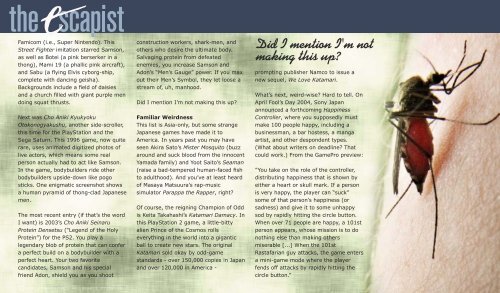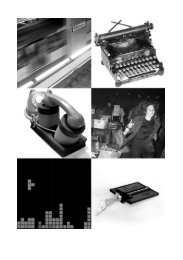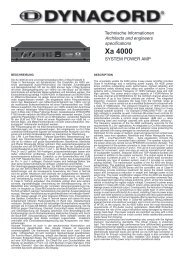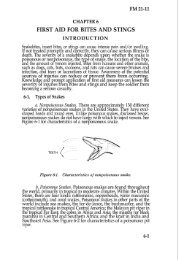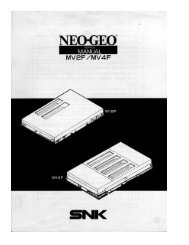Create successful ePaper yourself
Turn your PDF publications into a flip-book with our unique Google optimized e-Paper software.
Fami<strong>com</strong> (i.e., Super Nintendo). This<br />
Street Fighter imitation starred Samson,<br />
as well as Botei (a pink berserker in a<br />
thong), Mami 19 (a phallic pink aircraft),<br />
and Sabu (a flying Elvis cyborg-ship,<br />
<strong>com</strong>plete with dancing geisha).<br />
Backgrounds include a field of daisies<br />
and a church filled with giant purple men<br />
doing squat thrusts.<br />
Next was Cho Aniki Kyukyoku<br />
Otokonogyakushu, another side-scroller,<br />
this time for the PlayStation and the<br />
Sega Saturn. This 1996 game, now quite<br />
rare, uses animated digitized photos of<br />
live actors, which means some real<br />
person actually had to act like Samson.<br />
In the game, bodybuilders ride other<br />
bodybuilders upside-down like pogo<br />
sticks. One enigmatic screenshot shows<br />
a human pyramid of thong-clad Japanese<br />
men.<br />
The most recent entry (if that’s the word<br />
I want) is 2003’s Cho Aniki Seinaru<br />
Protein Densetsu (“Legend of the Holy<br />
Protein”) for the PS2. You play a<br />
legendary blob of protein that can confer<br />
a perfect build on a bodybuilder with a<br />
perfect heart. Your two favorite<br />
candidates, Samson and his special<br />
friend Adon, shield you as you shoot<br />
construction workers, shark-men, and<br />
others who desire the ultimate body.<br />
Salvaging protein from defeated<br />
enemies, you increase Samson and<br />
Adon’s “Men’s Gauge” power. If you max<br />
out their Men’s Symbol, they let loose a<br />
stream of, uh, manhood.<br />
Did I mention I’m not making this up?<br />
Familiar Weirdness<br />
This list is Asia-only, but some strange<br />
Japanese games have made it to<br />
America. In years past you may have<br />
seen Akira Sato’s Mister Mosquito (buzz<br />
around and suck blood from the innocent<br />
Yamada family) and Yoot Saito’s Seaman<br />
(raise a bad-tempered human-faced fish<br />
to adulthood). And you’ve at least heard<br />
of Masaya Matsuura’s rap-music<br />
simulator Parappa the Rapper, right?<br />
Of course, the reigning Champion of Odd<br />
is Keita Takahashi’s Katamari Damacy. In<br />
this PlayStation 2 game, a little-bitty<br />
alien Prince of the Cosmos rolls<br />
everything in the world into a gigantic<br />
ball to create new stars. The original<br />
Katamari sold okay by odd-game<br />
standards - over 150,000 copies in Japan<br />
and over 120,000 in America -<br />
prompting publisher Namco to issue a<br />
new sequel, We Love Katamari.<br />
What’s next, weird-wise? Hard to tell. On<br />
April Fool’s Day 2004, Sony Japan<br />
announced a forth<strong>com</strong>ing Happiness<br />
Controller, where you supposedly must<br />
make 100 people happy, including a<br />
businessman, a bar hostess, a manga<br />
artist, and other despondent types.<br />
(What about writers on deadline? That<br />
could work.) From the GamePro preview:<br />
”You take on the role of the controller,<br />
distributing happiness that is shown by<br />
either a heart or skull mark. If a person<br />
is very happy, the player can “suck”<br />
some of that person’s happiness (or<br />
sadness) and give it to some unhappy<br />
sod by rapidly hitting the circle button.<br />
When over 71 people are happy, a 101st<br />
person appears, whose mission is to do<br />
nothing else than making others<br />
miserable [...] When the 101st<br />
Rastafarian guy attacks, the game enters<br />
a mini-game mode where the player<br />
fends off attacks by rapidly hitting the<br />
circle button.”


